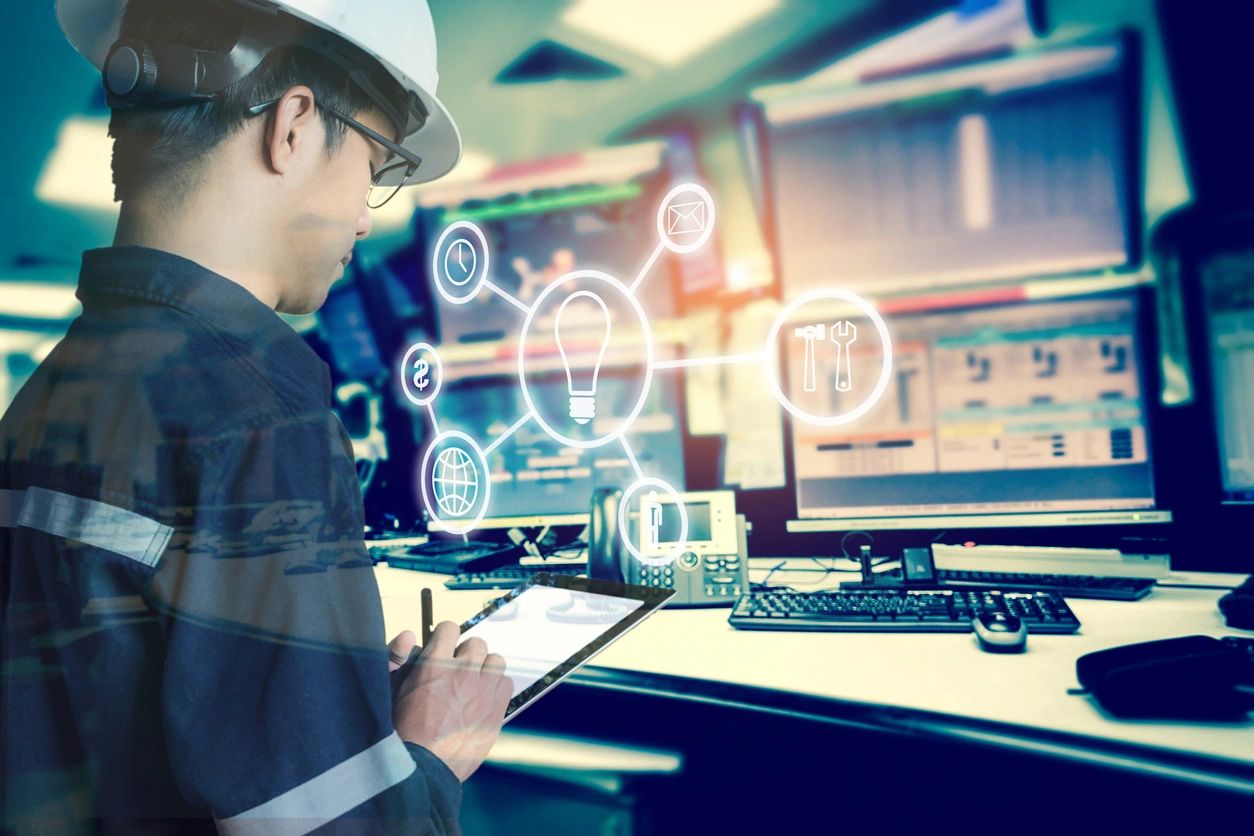The construction industry is no longer just about bricks and mortar; it has evolved into a realm where cutting-edge technologies are reshaping the way we design, plan, and construct our built environment. Augmented Reality (AR), Virtual Reality (VR), and Artificial Intelligence (AI) are three prominent technologies that have made significant strides in recent years, revolutionising the construction landscape.
- Augmented Reality (AR)
AR overlays digital information onto the real world, providing construction professionals with an augmented view of their surroundings. In the construction sector, AR is being utilised for enhanced project visualisation, enabling architects, engineers, and clients to ‘see’ the finished project before construction begins. AR helps in identifying design flaws, making real-time adjustments, and visualising the finished project in a more interactive and immersive manner.
For instance, AR allows on-site workers to view digital blueprints through a tablet or smart glasses, providing real-time guidance and reducing errors. This not only enhances efficiency but also ensures safety compliance.
- Virtual Reality (VR)
VR, on the other hand, creates a completely immersive digital environment that users can explore. In construction, VR is being employed for virtual walkthroughs of architectural designs. Architects and clients can ‘walk’ through a building and experience the space even before it’s built. VR facilitates better collaboration, as stakeholders can provide feedback based on their virtual experience.
Moreover, VR is invaluable in construction training and simulations. It allows workers to practice complex tasks in a safe and controlled virtual environment, minimising risks and improving skills.
- Artificial Intelligence (AI)
AI, the powerhouse of data analysis and prediction, is being integrated into construction processes to optimise decision-making. AI algorithms analyze vast amounts of data to identify patterns and make predictions, aiding in project scheduling, cost estimation, and risk assessment.
For instance, AI can analyze historical project data to predict potential delays or cost overruns, enabling project managers to take proactive measures to mitigate these issues. AI-powered drones and robots can also be deployed to conduct site inspections and gather data, enhancing efficiency and accuracy.
In conclusion, the integration of AR, VR, and AI in the construction industry is revolutionising how projects are envisioned, designed, and executed. These technologies are driving efficiency, reducing errors, enhancing safety, and ultimately leading to cost savings. As these technologies continue to advance, the construction industry will undoubtedly embrace a future where the line between the physical and digital worlds becomes increasingly blurred, paving the way for smarter, more efficient, and sustainable construction processes. Stay tuned for the exciting innovations that lie ahead in this ever-evolving field.






